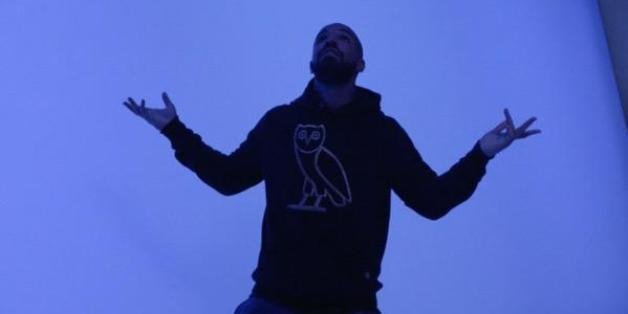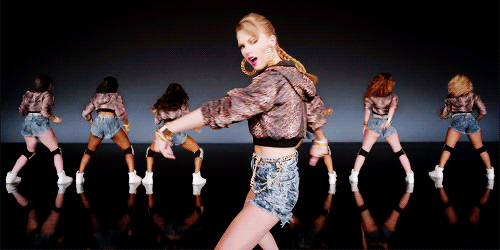
Dancing with the Stars has shown us that the celebrities that we thought couldn't dance, could. Music videos have shown us that some musicians who we thought could dance, couldn't.
Take, for example, Drake. Last week, he released the music video for "Hotline Bling", where he showed off his dance moves. On Defamer, Rich Juzwiak describes Drake's dancing as, "so outrageous it's practically unbelievable and yet it still exists." His dancing has even the subject of a wave of memes: Drake was playing tennis, his dancing was compared to Elaine Benes' dancing from Seinfeld, and he became a reaction gif.
But, unlike in most music videos, Drake's dancing wasn't choreographed. According to Tanisha Scott, a dancer and choreographer who worked with Drake to produce Hotline Bling, in an interview with Complex, "[All] those memes and [mashups], he knew that was going to happen! We were looking at playbacks, and he was like, 'This is totally going to be a meme.' He's borderline brilliant. He knew what was going to happen."
Drake's dorky dancing is just one in a wave of other musicians whose dancing turned into popular memes: PSY, Taylor Swift and Lorde. These artists are dancing how we've always wanted to dance when we hear music - how people dance only when they're alone or drunk.
Many of these artists' songs trigger a "dancing impulse" that makes you want to bob your head Drake-style and tap your toes. Who doesn't feel the urge to shake it off when listening to "Shake It Off"? Unfortunately, this dance reflex leads to embarrassing, meme-able dance moves.
PSY and Taylor Swift's dancing is choreographed to look silly, while Lorde and Drake just "went for it". In a Reddit Ask Me Anything, Lorde writes, "i know when i'm onstage, i don't think about how it looks, i just concentrate on really feeling what i hear. but i totally know i look like gollum when i perform, so it's cool."
Celebrities dancing badly - and embracing their bad dancing - is actually making dancing more accessible. Dancing becomes more about how you feel while you're doing it, rather than what you look like when you're dancing. Bad dancing makes celebrities more relatable, and their music more interactive. Bad dancing in music videos is a countermovement to music videos with no dancing at all.
"There's an inspirational narrative, in other words, embedded in the Bad Dance," wrote Paige Pritchard in The Riveter Magazine. "But for it to truly be the inspiring bird-flip to the established order of Good Dancing, the Bad Dancer would effectively have to know his dancing was considered, by popular consensus, bad, or inherently bad, by his own acumen. The assumption of awareness changes things completely. It brings up intention. Take, for example, the last frat party or wedding you went to where guests got drunk and started dancing. There's always that one guy who ends up doing the robot, or the late '80's classic Running Man, or the '80s hip-hop-inspired Cabbage Patch, or Madonna's angular, rigid-armed Vogue ... Everyone is looking on and laughing at how bad it is, but he's laughing with them. He knows how bad it is, and that's what makes it so good, so fun, how everyone agrees on the badness and are thus brought together on a shared plane that could only be established and subsequently reinforced by stepping outside of the "appropriate" and collectively acknowledging its breach."
There are many theories as to why these artists released music videos, aware of their ridiculous dance moves. According to Spencer Kornhaber in The Atlantic, "With the "Hotline Bling" video, [Drake] finally declares himself the alpha-and-omega of Internet culture, someone who makes a video intended for mockery and then puts the mockery on his Instagram." The dance becomes a status symbol - no matter how ridiculously he dances, he's still famous, probably even more famous because of it.
"A week before the video dropped, Drake wrote about how deeply he yearned to have 'Hotline Bling' be his first No. 1 song," wrote Kornhaber. "This, like his dancing, wasn't a risk-free declaration--it was a transparent sign of thirst."
But there are many other ways to get a No. 1 single that don't involve dorky dancing. This movement to lame dancing gets rid of the seriousness and the necessity of "looking cool" that comes with dancing competitions, such as Dancing with the Stars and So You think You Can Dance.
"Every current chart-topping female performer bases their character on some kind of attractive/hot/provocative/sexy prototype," wrote Kat George in Noisey. "Even someone like Meghan Trainor who is 'all about that bass' wields her voluptuousness in a boringly infantilized sexy way. So Taylor Swift, who is not the cool girl at the party, who dances like your whiter than white aunt from the Mid-West after two glasses of rosé at Christmas, who is all elbows and knees and angles...Bar Lorde she might be the only woman in pop who's putting sex appeal on the back burner."
Bad dancing is a way to musicians to reinvent what it means to be a musician. Most popular musicians are branded to be sexy, to be attractive. This bad dancing is a movement away from that. It's a message that musicians just have to be good at making music. It's making dorky dancing more socially acceptable, even cool.

